Complete Guide to Start and Maintain a Freshwater Shrimp Tank
Why Shrimp?
Let’s learn how to setup a shrimp tank the right way, the first time! Shrimp are fascinating little creatures that are now very common in the aquarium hobby. There are even many hobbyists that are exclusively shrimp keepers! When kept in a species-only aquarium, you can truly see their quirky personalities. They can be seen swimming and grazing throughout the tank all day and night. They’re very curious creatures and if anything goes into the tank, whether it be food, maintenance tools, or your fingers, they’ll likely come closer to check it out!
Shrimp also readily breed in the aquarium, so you’ll be able to see their entire lifecycle from when a female is carrying eggs to when they hatch into adorable shrimplets and mature. As they grow, they will molt, a process where they shed their old shell and grow a new one better suited to their size. You’ll probably see lots of old shells lying around the tank! As you can tell, I’m a bit obsessed with shrimp but how could I not be? There’s never a boring moment with shrimp with lots to see and lots to learn. Raising and caring for shrimp is very fulfilling and hopefully with this guide, you can be a shrimp keeper too!
Shrimp Tank Size
Shrimp are very small creatures, but their proper tank size is largely debated. Each shrimp keeper tends to have their own opinion based on experience. This is mainly because the number one thing shrimp need is stability. If there is one thing you should takeaway from this article, it is that shrimp need stability. Fluctuating water parameters is detrimental to shrimp and will cause them to die. Sometimes it will be immediate (within days), or they’ll be chronically stressed and die over time.
This is where the tank size debate comes in. The larger the tank, the more stable the water parameters tend to be. In smaller tanks, even the slightest provocation can spike any one of your water parameters very quickly. Because of this, the general consensus is that bigger is better. Larger tanks will be easier to maintain and keep stable. Smaller tanks will limit the number of shrimp you’ll be able to keep and if the tank is overpopulated, the shrimp will likely stop breeding.
It is also important to keep in mind the species of shrimp you intend to keep, as some are more sensitive to changes than others.
My personal opinion is that you can go as low as 3 gallons for a shrimp tank, just bearing in mind everything I’ve mentioned previously on stability and limitations on number of shrimp. For more sensitive species, such as crystal red/black shrimp and Taiwan bees (caridina species), I would recommend having a larger tank (closer to 10 gallons or larger) unless you are experienced, very strict with tank maintenance and check water parameters religiously.
Tools to Setup a Shrimp Tank
Once you’ve decided on your tank, it’s time to set it up! Here are some general things you will need:
Substrate
Substrate hosts loads of beneficial bacteria, can help stabilize your water parameters, and is a great grazing surface for shrimp. For Neocaridina species, such as the common Cherry shrimp and it’s color variants, an inert substrate such as sand or gravel will work just fine.
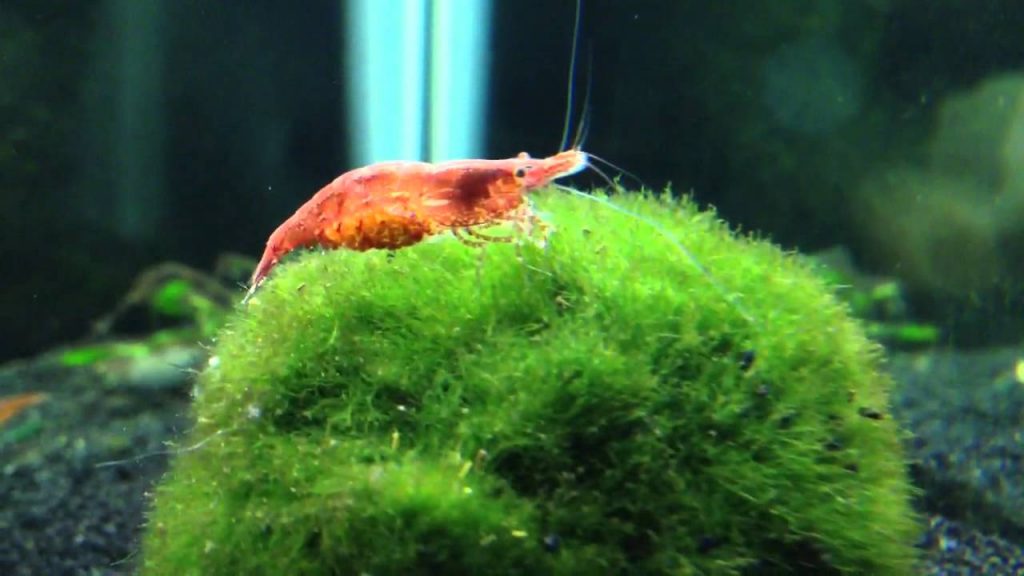
A berried Neocaridina
For soft water shrimp species, such as Caridina shrimp, I would recommend using an active substrate. Active substrates buffer your water to keep the pH stable at around 5.5-6.5, depending on the substrate you use. This is especially important for Caridina breeding and survival rate of shrimplets. The downside of active substrates is that they need to be replaced once they’ve been exhausted. Most active substrates will last one year on average before needing to be swapped at that point your pH will start to climb.
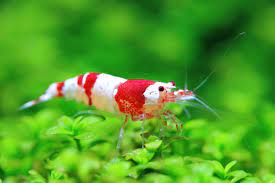
Crystal Red Shrimp (caridina)
I am currently using Ibaraki Akadama soil, which is a reddish-brown, hard-baked clay normally used for bonsai trees. It works great as an active substrate for shrimp, is budget-friendly, and is very long-lasting. I decided to use it after a recommendation from Mark’s Shrimp Tank. He’s had it last for over 3 years before exhausting.
I have also used Fluval Shrimp Stratum with great success as well.

CHECK IT OUT (#ad)
Bacterial Products
Bacterial products are very useful for selecting the bacteria that will be in your tank. Basically, you want lots of good bacteria to be present in the tank to outcompete any bad bacteria that could harm your shrimp! Beneficial bacteria are responsible for cycling your tank and keeping your ammonia, nitrites, and nitrates at bay. They are also important for biofilm formation, which shrimp of all ages like to graze on. This is especially important for baby shrimp, which tend to hide during their first few weeks of life. If you have adequate biofilm in your tank, your baby shrimp should have plenty of food available near them until they’re ready to start roaming the tank.
I like to setup a shrimp tank with a layer of bacteria before putting in substrate. Here are the steps in which I do so.
- Sprinkle Borneo Wild Enlive across the bottom of the tank
- Pour on 3cm of substrate
- Add GlasGarten BacterAE over the substrate.[BacterAE is also good to add during water changes]

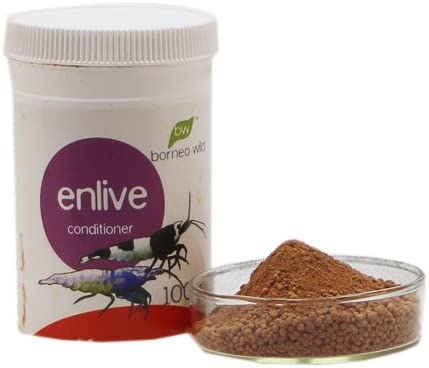
CHECK IT OUT  (#ad)
(#ad)
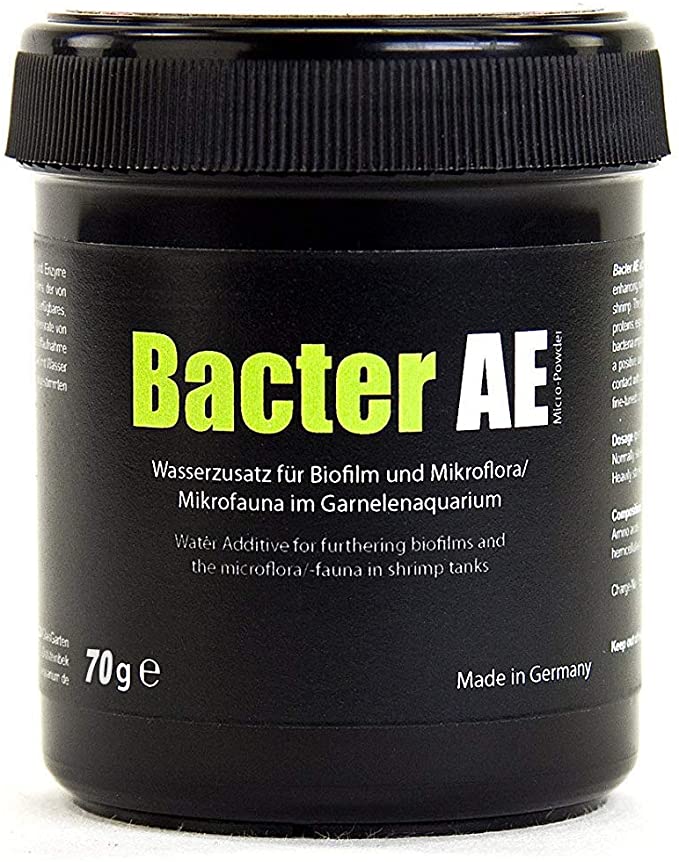
CHECK IT OUT (#ad)
Water Quality
It is important to do your research on the shrimp species you intend to keep so you know what type of water parameters they like. Some of the most important parameters to check are Total Dissolved Solids (TDS), General Hardness (GH), and Carbonate Hardness (KH).
Depending on the water in your area, you can use tap water for your tank. If you are, it is essential you use a water conditioner to make it aquarium-safe. My favorite product is Seachem Prime, which not only dechlorinates water, but also neutralizes ammonia, nitrite, and nitrates.
 CHECK IT OUT (#ad)
CHECK IT OUT (#ad)
I live in London, UK, which has very hard water. Because of this, I use Reverse Osmosis (RO) water when setting up a tank and when doing water changes. To do this, I add SaltyShrimp GH+ to a bucket of RO water, mix it, and check the TDS using a TDS meter. I can add more remineralizer if needed until I reach the desired TDS. After that, I can add it to the tank.
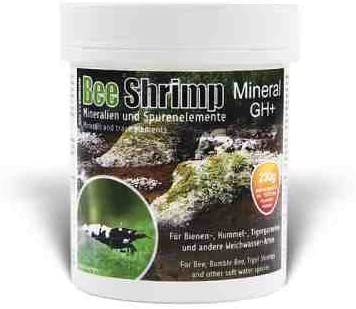
Check It OUT (#ad)
No matter what water you decide to use, it is important to age it in an open container for at least 24 hours first. This allows the water to stabilize its pH (when not under high-pressure conditions such as in water pipes) and also heat to room temperature. If your room is cooler than what you have set in your shrimp tank, you can add a heater to the water bucket.
Heater
Dwarf shrimp are tropical species, so it’s important to maintain their ideal temperature! A heater is useful for this, especially during the winter or if your room temperature is cooler than what is ideal for your shrimp. During the summer months, you may have the opposite problem, especially if you don’t have air conditioning. Having a fan pointed at the water surface is useful for cooling the aquarium if you need the extra help.
Recommended temperature ranges:
Neocaridina – 21°C – 26°C
Caridina – 19°C – 23°C
Aquarium Filter
Shrimp are extremely sensitive to nitrates, or all nitrogenous wastes. For that matter, you’ll need to have adequate filtration to setup a shrimp tank properly. Many shrimp keepers love using sponge filters in their tank because they not only aerate your water, but they also have a ton of biological filtration. Sponge filters can either be attached to an air pump or to a powerhead. The biggest advantage of sponge filters is that they have a huge surface area for beneficial bacteria and biolfilm to grow great for maintaining your cycle and perfect for baby shrimp to hide in and graze on!
If you decide on using a sponge filter, I would recommend getting a double-headed sponge filter. That way, you can clean or replace one of the sponges while leaving the other. This will ensure you still have loads of beneficial bacteria and won’t risk crashing your cycle.
Hang-on-back filters and canister filters also make great filters as they allow you to have multiple stages of filtration. Just remember to put a pre-filter sponge (fine grade) on the filter inlet so baby shrimplets don’t get sucked into the filtration!
Aquatic Plants
I personally love using live plants to setup a shrimp tank because they provide extra filtration by soaking up nitrogenous wastes and are great hiding places for shrimp. They also provide more grazing surfaces, which you can never have too much of.
Mosses and other low-maintenance plants are great for shrimp tanks because they don’t require too much care, such as extra fertilization, which shrimp can be very sensitive to. Mosses also supply a lot of hiding spaces for baby shrimp and freshly molted shrimp.
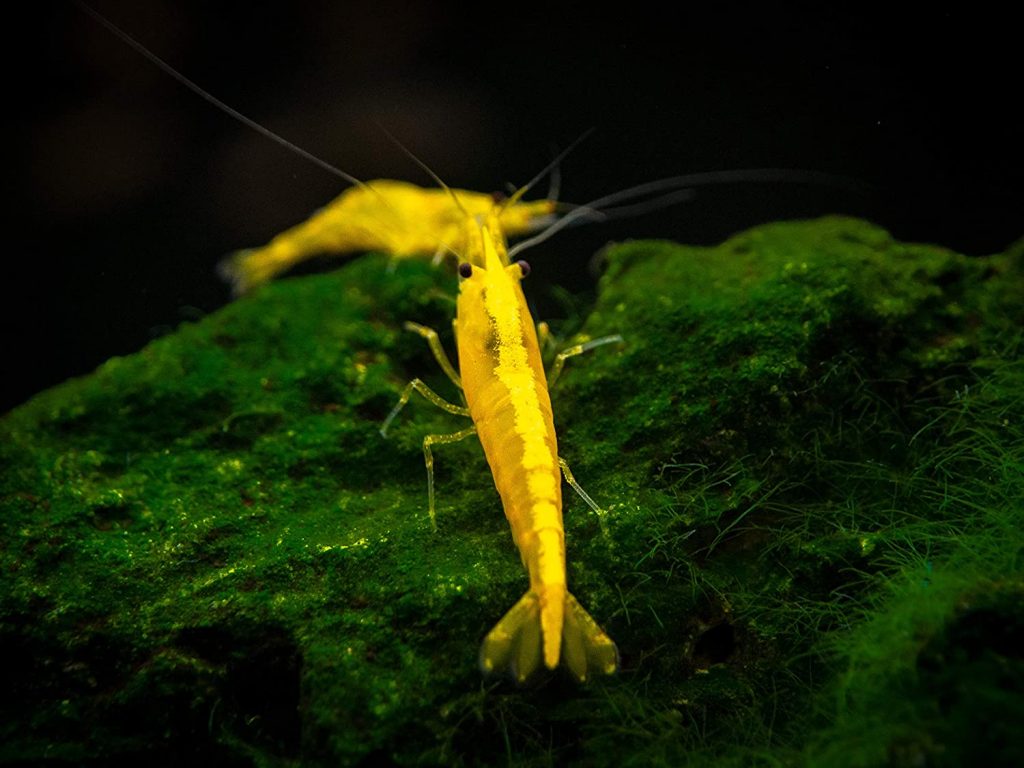
Yellow Neocaridina on a moss ledge (Rad Aquatic Designs)
Floating plants, such as the dwarf water lettuce and amazon frogbit you can see in the photos, are especially great for shrimp since they’re the best plants for soaking up nitrates. They also supply some shade for your shrimp and you’ll find that your shrimp love to climb and graze on the roots.
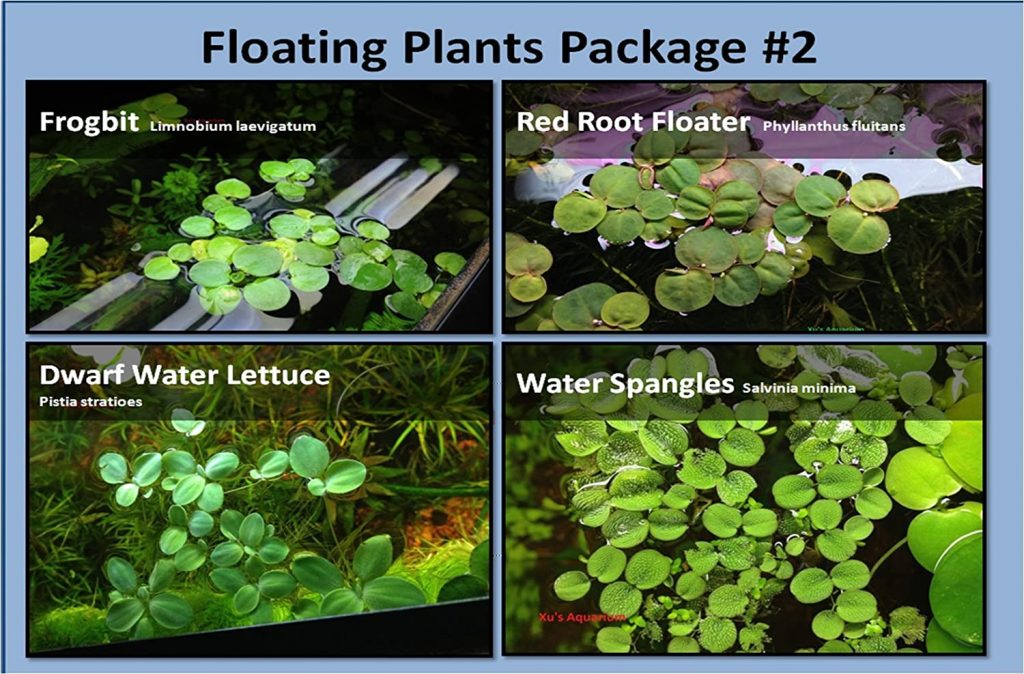
Dwarf Water Lettuce (majority front) & Amazon Frogbit (brighter green leaves in the back)
Aquarium Light
While on the topic of plants, I’ll have a quick word on lighting. Don’t stress over getting an over priced light because your shrimp aren’t too bothered about the kind of light you use. The lighting is mostly up to your taste and how well your want your tank illuminated. Certain lights would really accentuate the coloration of your shrimp and plants. I would suggest getting a light that is suitable for whatever plants you decide to use. Most low maintenance plants such as mosses are low-light plants, so most standard aquarium lights should be just fine. That being said, there’s also nothing wrong with getting a fancier light if that suits your taste. I mean that’s what I did ????
Feeding Dish

If you’re doing some shrimp research, you’ve likely noticed a plastic or glass dish in most shrimp tanks. The main purpose of these dishes is to prevent any leftover food. Rotting food will increase the nitrates in your water, so having a dish makes it easier for you to monitor how much food your shrimp is eating and to remove anything that’s uneaten after a few hours, even if it’s just a few crumbs. It also prevents these food crumbs from falling into the substrate and basically staying there to rot. Again that would increase your nitrates which could really harm your shrimp. Having this feeding dish prevents all of that!
Cycling to Setup a Shrimp Tank
Remember shrimp need stability! A cycling tank is the furthest thing away from stable and the last thing you’d want in a shrimp tank. It is recommended to cycle for at least a month to properly setup a shrimp tank. Most shrimp keepers even recommend two months to be safe. This is to ensure that the tank is cycled and matured. You want your tank to grow an adequate amount of biolfilm before you add your shrimp.
An important tool for monitoring your cycle is a water testing kit. This will allow you to track your tank cycle and know when it’s finished. I won’t go into the details of tank cycling because that in itself is a long topic that deserves an article of it’s own.
To test your water, I’d highly recommend using a liquid test as they’re significantly more accurate than the test strips (which can actually be quite inaccurate).
While on the topic of water testing kits, it may also be useful to get test kits for measuring the GH and KH in your tank. These parameters are quite important for shrimp keeping specifically. You want to ensure your GH and KH are within the desired range for the shrimp you’re keeping and to make sure there are no drastic swings that will stress your shrimp.
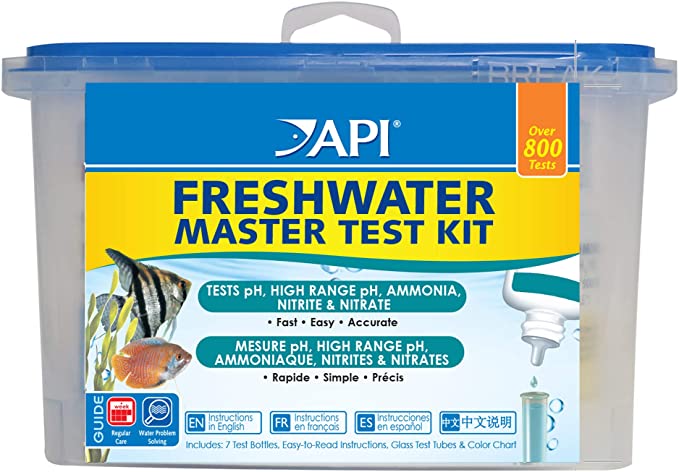
Useful Tools
TDS Meter
My TDS meter is by far the most useful shrimp keeping tool I have. It is a quick and easy thing to measure (it literally takes seconds) and it is a very important parameter to monitor when keeping shrimp. TDS refers to the amount of Total Dissolved Solids in your tank. Different shrimp prefer different ranges of TDS.
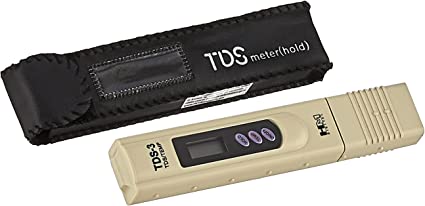
If your TDS is too low or too high, it will stress your shrimp and shorten their life span. Sudden changes in TDS will also shock and possibly kill them. This is why it’s so important to just have this tool around and check your TDS when you have spare time each day. It is especially important if you use remineralized RO water when doing water changes for your shrimp. You can measure the TDS in your tank and then remineralize your RO water to match it. This way there won’t be any large fluctuations to stress out your shrimp. Remember, stability is key!
Atlantis Aquatics 3 in 1 TDS Meter
This meter is great if you would like to keep a continuous read on TDS and know as soon as something is off. It also measures temperature in Fahrenheit and Celsius as well as pH. You can learn more about this aquarium meter here or learn more about Total Dissolved Solids (TDS) here.
Shrimp Net
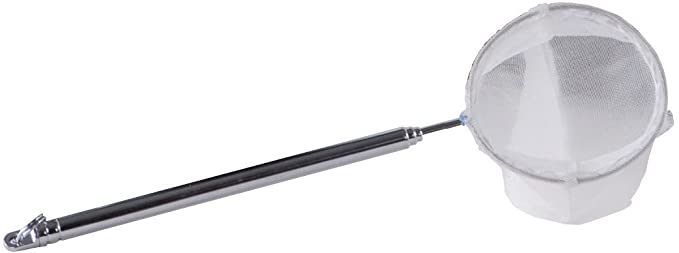
Shrimp nets have much finer netting than fish nets. This is to prevent any injuries to your shrimp when catching and moving them. It’s worth having them around as they do make it much easier to catch your shrimp. It is also useful having a shrimp-only net to avoid any cross contamination and possibly introducing harmful infections or parasites to your tank. The last thing you need is an infection in your shrimp tank. Many medications used to treat infection contain copper which can be deadly to shrimp. Having a shrimp specific net can help prevent that!
Sochting Oxydator
Purchasing this handy little device was a game changer for me in my shrimp tanks. Shrimp naturally come from highly oxygenated waters, which is why it is so important to have a lot of surface agitation/aeration in your tank. The best way to accomplish this is with your filter output or an air stone.
The Sochting oxydator uses hydrogen peroxide to oxygenate your aquarium water. The glass container is filled with hydrogen peroxide, where it reacts with a catalyst (a little stone that sits inside the container). The reaction produces water and oxygen, and the oxygen diffuses into your tank through the grey ceramic bowl.
Once I added the oxydator, I was amazed at the difference I saw in my shrimps behavior. They were especially useful during the hot London summers and oxygen levels were dangerously low, as warmer waters retain less dissolved oxygen. I had many shrimp deaths despite extra aeration, cooling fans, and water changes. The oxydator was the only thing that made a difference. They’ve been a mainstay in my shrimp tanks ever since.
Thanks for reading the aquarium shrimp care guide!
Links
- Ibaraki Akadama soil: Click Here
- eFluval Shrimp Stratrum: Click Here
- Borneo Enlive: Click Here
- Glasgarten BacterAE: Click Here
- Rad Aquatic Design Acrylic Ledges: https://www.facebook.com/RADAquaticDesign/
- Feeding dish: Click Here
- API Freshwater Master Test Kit: Click Here
- HM TDS Meter: Click Here
- Fluval Telescopic Shrimp Net: Click Here
- Sochting Oxydator: https://www.pro-shrimp.co.uk/sochting-oxydator/8-sochting-mini-oxydator-4019056825204.html


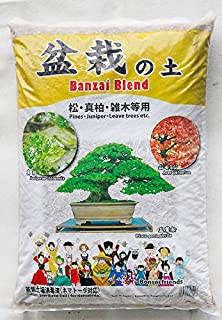


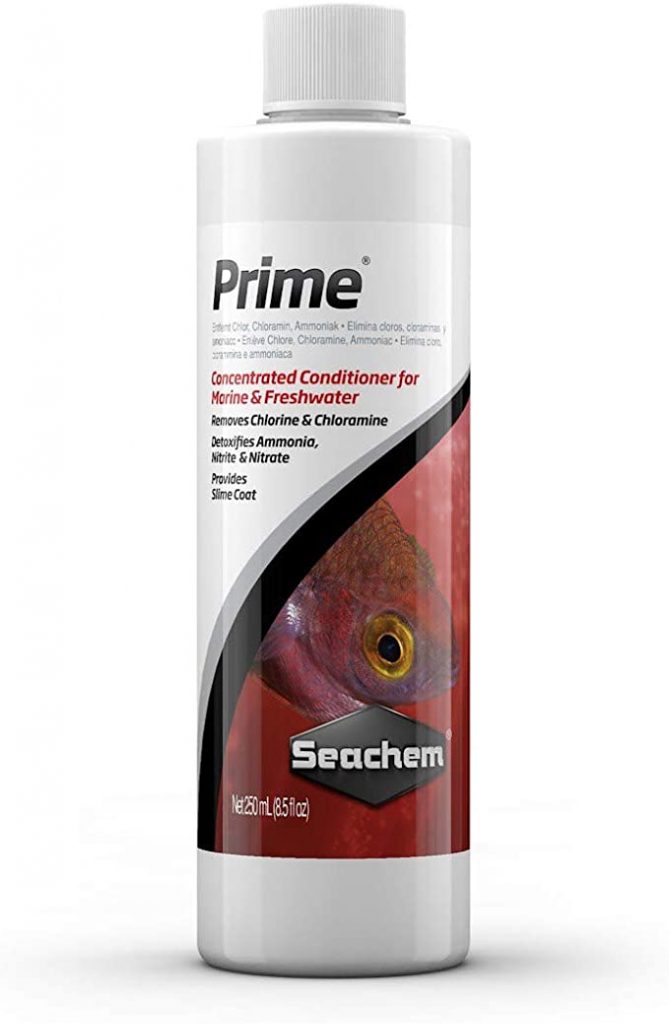


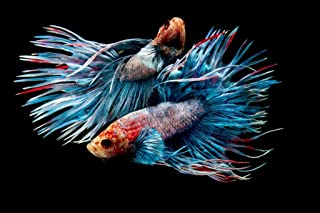















Add comment